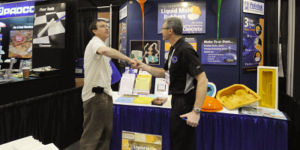Those of us who have been in the concrete business more than 30 years will sometimes reflect on the many changes that have taken place in that time, almost all of them good. We have safer job sites, better training and more professional protocols, to name a few things, although all of these could still be improved. At the same time, we continue to suffer some of the same dysfunction the industry has struggled with since I was an apprentice cement mason in 1973.
The dysfunction I speak of is the lack of communication between owners and designers at the top of the building process and the workers at the production end, as well as the training needed for a seamless transition from client’s conception to finished project. There are, of course, many contributing factors, including the low-bid process where shortcuts or lack of qualified installation professionals can take a perfectly good product or specification and turn it into an architect’s nightmare. Whatever the reasons, one thing is clear, and that is that the construction industry has not yet achieved what other industries have in implementing a full top-to-bottom approach toward production.
I make the comparison because lately I have been trying to learn some lessons from the business community to improve on my niche of the construction industry, training the cement masons and plasterers of Washington. One of the things I’ve been looking at is “training within industry” programs to improve the efficiency of our hands-on training. TWI supports “lean manufacturing,” a philosophy that prioritizes more customer value and less work.
I digress into manufacturing because that industry has seamless top-to-bottom processes for bringing new products online. Whether or not construction can or should follow “lean” processes, they give us a way to look at how we can more successfully and seamlessly operate, especially in this technologically advanced and green-built world, where new products and procedures are arriving at our job sites at an accelerated rate. How are we going to be successful when it is a crapshoot from the architect’s perspective if a trained professional is going to provide the top-value work they need?
There have been attempts from the manufacturers to help remedy this with product-specific training. The training centers of the Operative Plasterers’ and Cement Masons’ International Association (OPCMIA, the cement masons’ union) have been training people across the country in the proper installation and procedures of the products and equipment that come their way. Organizations such as the American Concrete Institute and the National Ready Mixed Concrete Association are also attempting to standardize procedures. Yet overall, we fall far short of having a seamless quality control system that assures the owner of a successful job or the manufacturer of successful application and success for their new product.
While there remain a lot of hurdles to overcome, there are some encouraging signs in our industry, including changes to bid delivery models, standardizing specifications, and the adoption of nationally recognized certifications and ethical standards. In delivery models, construction management and integrated product delivery methods offer more control and collaboration and are not held hostage by the low bid. There also seems to be an increasing desire in the design community for more assurance through certifications, and in trade associations for ethical codes of conduct. In the OPCMIA, we have a code of conduct for our workers and the desire to train to industry specifications and certifications for the betterment of the industry. The trick is to find a way for all areas of the industry to work together to find that seamless top-to-bottom model.
Promoting better polishing One example of the industry trying to pull the pieces together is in concrete polishing. As it grew in popularity, the polishing business drew in the bad along with the good contractors. Just at the time when the green building craze is ready to burst loose, there have been enough corner-cutters and unqualified players out there to seriously stunt the growth potential of this new product.
Mike Costello, of OCH Consulting LLC, in Mukilteo, Wash., is an independent consultant who was formerly with Dayton Superior Corp. He sees approximately 30 architectural firms monthly. He says that many design professionals have now had project experience with polished concrete floors. Some clients were very satisfied with the product, and the construction team met their expectations. However, in other cases, clients were not happy with the surface produced.
“My current estimation is that architects are going to demand more tools to give them more consistent results in finished, polished floors,” he says. “I would say that with other green options available, the polishing industry is at the tipping point of seeing it grow or seeing it crumble. They have some work to do.:
Yes, manufacturers independently offer training, which is sometimes very good, but it does not measure up as a national model of certification that architects can depend on, he says. “There is now a growing group of applicator professionals, with a huge investment in special equipment, who are determined to give designers better specification tools and to assure owners a polished floor surface they are proud of.”
The Concrete Polishing Association of America (CPAA) seems poised to draw the industry together. President Brad Burns describes it as a contractor association, but that is only part of the equation. The CPAA has many major players in both chemical and machine manufacturing on its board of directors, but with contractors in the executive roles, the organization plans to hold proprietary companies in check. This is an industry group that seems to understand that if the product is successful, they will all be successful. It is encouraging to see this eclectic group develop standardized training, a code of ethics for its members, and specifications they all agree with. The OPCMIA is interested in the same issues for the sake of the industry, and we have hope that this type of effort will prove to be a successful model. If they are successful in convincing the design community that quality work and training produce good results, we should start to see stabilization in the polishing market.
A collaboration of all parties is needed in the industry – labor, management, designers, owners and manufacturers need to work together to create an environment of success and professional standards. None of these parties alone can do it, although many try. The OPCMIA is ready, willing and able to contribute to the transition to a seamless industry. Every sector I talk to understands the need to develop professional industry-wide guidelines. The question is: How do we set aside the urge toward cutthroat competition to develop the strategies and systems needed to assure success for all involved? I have seen a lot of positive changes in the concrete world over the last 44 years. I would love to see another one, for the good of the industry and the workers who make their living in it.















